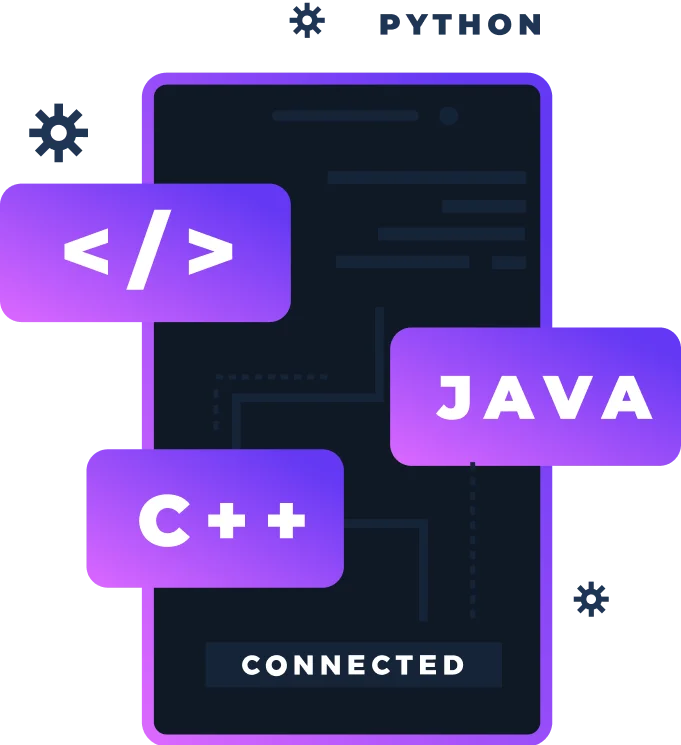

Micro Frontend Architecture

What is Micro Frontend Architecture?
Micro frontend design is a way to deal with web improvement where a solitary application is separated into different more modest, freely deployable frontend applications. This architecture is a front-end development approach that divides a monolithic codebase into smaller apps, each addressing a specific business vertical.
Key Principles of Micro Frontend Architecture
1. Independence:
Micro-frontend architecture is not tied to any particular technology stack and may be used by different teams, each with unique requirements for how and what services they want. When people feel more invested, they make better decisions, shorten development times, and add more valuable features.
2. Freedom to innovate:
The independence of microservices and micro-frontend architecture allows you to choose the technologies you want to use. Developers can choose different technologies that meet the requirements of their projects and business logic.
3. Isolated State and Routing:
Each micro frontend uses its own state management and routing. This arrangement guarantees that modification of one micro frontend don’t affect the others, which makes application stronger and easy to debug.
4. Shared Nothing:
Code and state should not be shared between micro frontends. In the case of sharing is vital, it ought to be done unequivocally through distinct APIs or shared libraries to limit coupling and conditions.
Benefits of Micro Frontend Architecture
1. Scalability:
You may create a highly scalable application using the architecture micro-frontend. The system may be scaled up or down by adjusting the size of its components. Micro-frontends allow your development teams to make changes without impacting the overall speed of your online app.
2. Autonomous Teams:
Micro frontends empower teams to take ownership of specific components. This arrangement fosters faster decision-making, and development, and increased collaboration across teams. Developers can achieve higher productivity and efficiency, by working on smaller, more manageable pieces.
3. Fault seclusion:
Creating robust apps is a crucial benefit of micro-frontend design. There is no risk to the whole system if anything goes wrong in one of the micro applications. Smooth service degradation is achieved, guaranteeing a satisfying app experience despite bugs in some aspects.
4. Ease of Maintenance:
It is optimal to refactor and undergo maintenance in these smaller and self-contained codebases. Features can be released without affecting the entire application, and accelerates the debugging time.
5. Gradual Upgrades:
Micro frontends take into consideration continuous overhauls and movement. Rewriting or updating portions of the application does not necessitate a complete overhaul, minimizing risk and downtime.
6. Maintainability:
Developers are turning to micro-frontend design to break an extensive program into manageable chunks. Different code bases are used for each micro-app. Features and capabilities dictate how each codebase is shared. Improved maintainability is a result of modular design and a distinct codebase.
Implementing Micro Frontend Architecture
1. Composition Techniques:
- Server-Side Composition: The server collects the different micro frontends into a solitary HTML page. This strategy can make use of existing server-side rendering techniques and ensures quick initial load times.
- Client-Side Composition: The browser loads and assembles the various micro frontends dynamically. This approach offers greater adaptability and can diminish server load yet may bring about more slow beginning burden times.
- Edge-Side Composition: The micro frontends are put together by an edge server or content delivery network (CDN). This approach can join the advantages of both server-side and client-side organization, offering quick burden times and adaptability.
2. Routing:
Handling routing and navigation in a micro frontend architecture requires careful consideration. Approaches like URL routing, path-based routing, or a centralized router can help maintain a coherent user experience across different micro frontends.
3. Communication:
For communication between micro frontends, make use of clearly defined APIs. Custom events, shared state management libraries, and message buses are all ways to accomplish this
4. Shared Libraries:
In the event that specific libraries or parts should be shared, utilize a common library approach with severe forms to stay away from clashes. Make sure that shared libraries are minimal and do not cause micro frontends to be tightly coupled.
Challenges and Solutions
1. Increased Complexity:
Dealing with various micro frontends can present intricacy regarding organization, correspondence, and coordination. This complexity can be managed with the assistance of automation tools and CI/CD pipelines.
2. Performance Overheads:
Various micro frontends can increase the load times and execution overheads. Implement some optimization techniques like lazy loading, efficient caching, and minimizing shared dependencies to improve performance.
3. Consistent User Experience::
It can be difficult to ensure a consistent user experience across various micro frontends. Laying out plan rules and utilizing shared plan frameworks can assist with keeping up with consistency.
4. Maintaining Compatibility and Versioning:
As micro frontends are developed and deployed independently, ensuring compatibility and versioning between components becomes important. Adopting standardized contracts and versioning strategies helps manage dependencies effectively.
Conclusion
A powerful strategy for creating web applications that are scalable, manageable, and adaptable is micro frontend architecture. By stalling the frontend stone monument into more modest, free pieces, engineers can accomplish more noteworthy independence, quicker conveyance, and simpler support. Even though implementing micro frontends brings with it new difficulties, the advantages frequently outweigh the disadvantages, making it an appealing option for contemporary web development.
While far from the only approach, micro-frontends have been delivering these benefits and this technique is able to apply gradually over time to the legacy codebase as well. Whether micro frontends are the right approach for you and your organization or not, we can only hope that this will be part of a continuing trend where frontend engineering and architecture is treated with the seriousness that we know it deserves.
Interested in Learning More About x-enabler Book a One-to-One Personalized Call



Leave a comment!